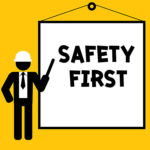As safety leaders, we collect countless amounts of data: risk assessments, behavior-based activities, training records, hazard identifications, and incident investigation reports, just to name a few. Using the 5S methodology as a framework, the panelists will discuss how to organize your company’s safety data by undergoing a comprehensive review of what workplace activities act as leading indicators to drive injury prevention and how you will drive the completion of these events to develop a stronger safety culture.
This webinar introduces an exciting partnership between (2) safety industry leaders: ProcessMAP, an EHS Management Software company, and C.A. Short Company, an employee engagement and safety incentive company. These technological platforms are solution-based tools that will help reduce the administrative nightmare that is EHS data management.
Speakers
 Todd M. Shannon, Vice President of Sales and Marketing, C.A. Short Company
Todd M. Shannon, Vice President of Sales and Marketing, C.A. Short Company
Todd Shannon, VP of Sales and Marketing at C.A. Short Company, has more than 25 years of sales and marketing leadership experience. Prior to joining the C.A. Short Company family, Todd helped Unilever, as well as other Fortune 500 companies, grow exponentially. His ability to develop processes and systems enveloped in a culture of empathy, compassion, and respect, makes him expertly qualified to help companies create meaningful ways to build an engaging and safe company culture. And his extensive experience in the consumer packaged goods sector uniquely positions him as an in-demand speaker and thought leader for all things safety, engagement, and recognition-related.
 Harold Gubnitsky, President and the Chief Strategy Officer, ProcessMAP Corporation
Harold Gubnitsky, President and the Chief Strategy Officer, ProcessMAP Corporation
Harold Gubnitsky serves as the President and the Chief Strategy Officer at ProcessMAP Corporation. He is responsible for the overall corporate development, strategy, strategic relations, analyst relations and business development, and has served as a founding board member of ProcessMAP since 2000.
Prior to joining ProcessMAP, Harold served as a Managing Director for XL TechGroup, a company with a distinctive business model focused on continuously inventing, funding, and growing new market facing businesses to address global unmet needs with unique and sustainably differentiated business models. Harold also served as a Vice President and practice leader at Cambridge Technology Partners, the first publicly traded Strategy and IT consulting service company. Harold started his career and spent several years as part of the management team of Accenture/Andersen Consulting, leading teams to deploy advanced technology business solutions across a number of industry sectors.
 Hilary Framke, EHS Leader
Hilary Framke, EHS Leader
Hilary Framke is an EHS Leader from a top global manufacturer of medical devices. While her company innovates the market to bring technology to life, their safety performance leads the industry with injury rates 6x lower than competitors. Her network of EHS leaders across the globe foster programming and drive record-breaking performance for thousands of workers in diverse professional settings including: manufacturing, office, service & repair, and distribution. Hilary began as a Safety Technician and has direct experience with every pain point that data collection, verification, and communication creates for EHS professionals. Joining as a panelist, Hilary will share her unique experience with the ProcessMAP software and how a partnership with C.A. Short Company can drive the integration of safety data into a system that creates positive reinforcement for actions that proactively manage risk and prevent workplace injuries.
Sponsored by

Register
By clicking above, I acknowledge and agree to Informa’s Terms of Service and to Informa’s use of my contact information to communicate with me about offerings by Informa, its brands, affiliates and/or third-party partners, consistent with Informa’s Privacy Policy. In addition, I understand that my personal information will be shared with any sponsor(s) of the resource, so they can contact me directly about their products or services. Please refer to the privacy policies of such sponsor(s) for more details on how your information will be used by them.
 Jordan Workman, Director of Client Development for North America & Europe, Performance Solutions by Milliken
Jordan Workman, Director of Client Development for North America & Europe, Performance Solutions by Milliken
 Travis Vance, Partner, Fisher Phillips
Travis Vance, Partner, Fisher Phillips

 Howard Mavity, Partner, Fisher Phillips LLP
Howard Mavity, Partner, Fisher Phillips LLP
 Todd M. Shannon, Vice President of Sales and Marketing, C.A. Short Company
Todd M. Shannon, Vice President of Sales and Marketing, C.A. Short Company Harold Gubnitsky, President and the Chief Strategy Officer, ProcessMAP Corporation
Harold Gubnitsky, President and the Chief Strategy Officer, ProcessMAP Corporation Hilary Framke, EHS Leader
Hilary Framke, EHS Leader 

 Tom Cecich, President of TFC & Associates, Strategic Advisor for Avetta
Tom Cecich, President of TFC & Associates, Strategic Advisor for Avetta